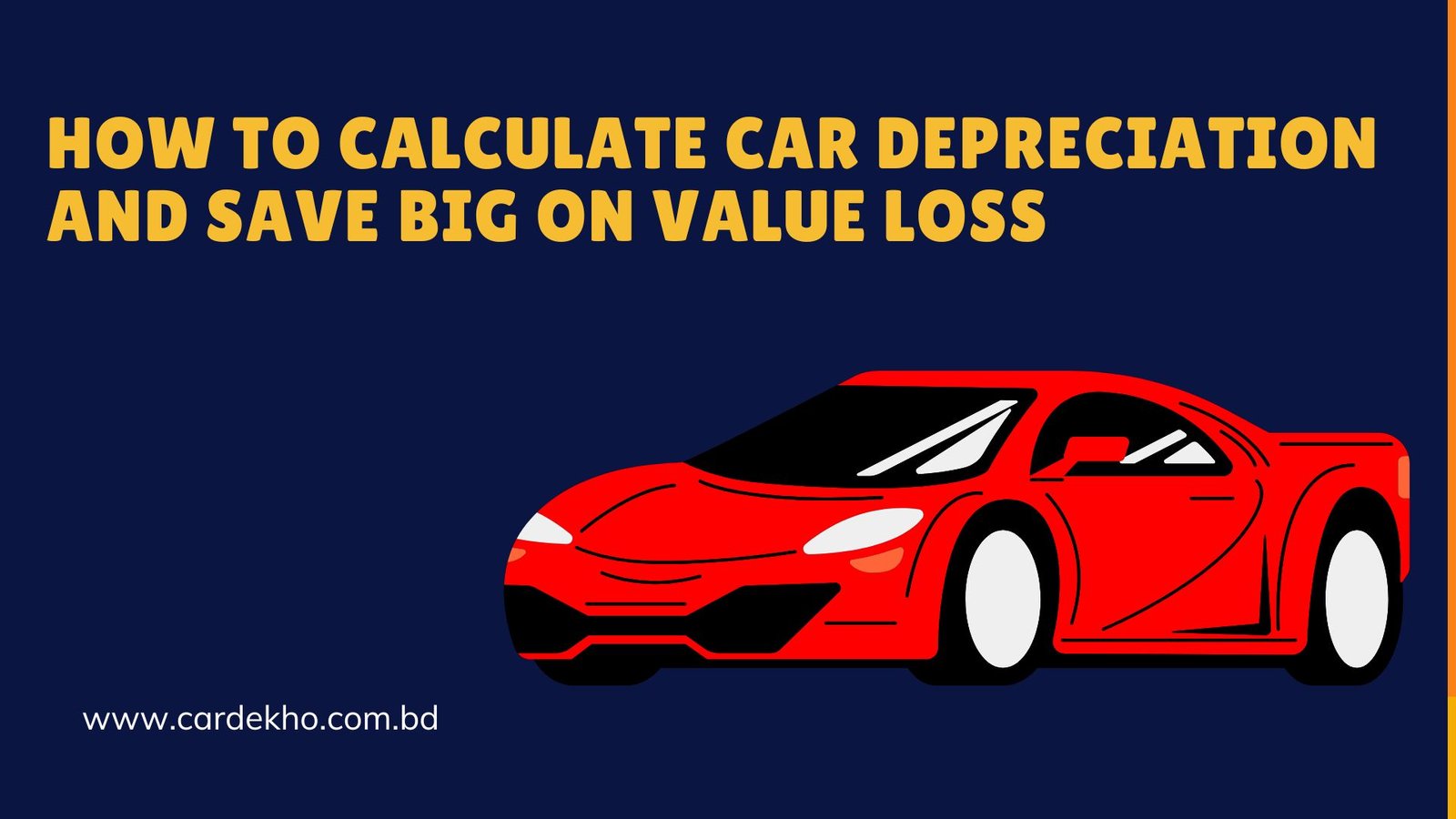When you buy a car, its value starts to decrease over time. This decrease in value is called depreciation. Understanding car depreciation is crucial for both car buyers and owners as it affects your car’s resale value and overall financial planning. This article will explain what car depreciation is, how to calculate it, and practical ways to minimize its impact.
What is Car Depreciation?
Car depreciation refers to the reduction in a car’s value over time due to factors such as age, mileage, condition, and market demand. It is an inevitable part of owning a vehicle, but its rate can vary depending on the car’s make and model, maintenance, and other external factors.
On average, a new car loses 20-30% of its value in the first year and around 15% annually over the next few years. By the time a car is five years old, it may have lost up to 60% of its original value.
How to Calculate Car Depreciation
Car depreciation can be calculated using several methods. Here are two common approaches:
1. Straight-Line Depreciation Method
This is the simplest method, where the depreciation is evenly spread over a set period. The formula is:
Depreciation = (Purchase Price – Residual Value) / Useful Life
- Purchase Price: The original price of the car.
- Residual Value: The estimated value of the car at the end of its useful life.
- Useful Life: The number of years you expect to use the car.
Example:
If you buy a car for 1,000,000 Taka and expect it to be worth 400,000 taka after 5 years:
Depreciation = (1,000,000 – 400,000) / 5 = 120,000 per year.
2. Declining Balance Method
This method applies a fixed depreciation percentage to the car’s value each year.
Depreciation = Current Value × Depreciation Rate
While depreciation rates vary, here’s a general estimate of how cars lose value over time in Bangladesh:
- First Year: 15-20% depreciation.
- Second to Fifth Year: 10-15% depreciation per year.
- After Five Years: 5-10% depreciation per year, depending on the car’s condition and demand.
Factors Influencing Car Depreciation
Several factors contribute to how quickly a car depreciates:
a) Age of the Car
The older a car is, the more its value depreciates. New cars lose value the fastest within the first 3-5 years of ownership. After that, the rate of depreciation slows down but continues steadily.
b) Mileage
High mileage significantly affects a car’s resale value. Vehicles with lower mileage are generally more desirable in the Bangladeshi market, as they are perceived to have less wear and tear.
c) Brand and Model
Popular and reliable brands like Toyota and Honda tend to depreciate more slowly due to their strong reputation and availability of spare parts. Luxury brands, on the other hand, often face steep depreciation because of high maintenance costs and limited demand.
d) Condition of the Car
A well-maintained car retains its value better than one with visible wear and tear. Regular servicing, clean interiors, and minimal damage to the exterior play a crucial role in slowing down depreciation.
e) Market Demand
Vehicles that are in high demand in Bangladesh, such as fuel-efficient sedans or compact SUVs, depreciate slower than niche or luxury models. Additionally, cars with CNG or hybrid systems are often more valuable due to their lower running costs.
f) Government Policies
Government regulations and tax policies significantly impact car depreciation. For example, high import duties on new cars create a strong demand for used cars, which can mitigate depreciation for well-maintained vehicles.
g) Fuel Type
Diesel and CNG cars often retain value better than petrol cars in Bangladesh because of their lower fuel costs. However, as electric vehicles (EVs) gain popularity, petrol and diesel cars may face higher depreciation in the future.
Ways to Minimize Car Depreciation
To reduce the impact of depreciation on your car’s value, consider the following tips:
a) Regular Maintenance
Keep up with routine servicing and ensure that your car is in excellent mechanical condition. Use genuine spare parts to maintain performance and reliability.
b) Choose Popular Models
Invest in cars from reputable brands with strong resale value and good after-sales support in Bangladesh.
c) Limit Mileage
Avoid excessive usage of your car. Keep mileage reasonable to maintain its resale value.
d) Protect the Exterior and Interior
Regularly clean and wax your car’s exterior to prevent rust and maintain its appearance. Use seat covers and floor mats to protect the interior.
e) Avoid Major Modifications
While some modifications might enhance your car’s performance or aesthetics, they can negatively affect its resale value if they don’t align with buyer preferences.
f) Sell at the Right Time
Selling your car before it becomes too old can help you get a better resale price. Cars typically have the best resale value within the first 5-7 years of ownership.
Conclusion
Car depreciation is an inevitable part of vehicle ownership, but understanding how it works can help you make informed decisions. By calculating depreciation accurately and taking steps to minimize its impact, you can protect your investment and get better returns when it’s time to sell. Whether you’re buying a new car or planning to resell your current one, being proactive about managing depreciation will save you money in the long run.

